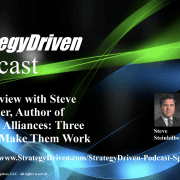Finding A Prospect vs. Creating A Prospect
You place a call to get through to the decision maker.
You call to find someone who needs your product or service.
You try to get an appointment.
You analyze names to prospect based on demographics, company size, job title.
You’re Playing A Numbers Game
You’re trying to find those 10 leads out of 100 that will even consider a conversation in which you can possibly place your solution – and then you’ll close 5 of them if you’re lucky. But a prospect is someone who WILL buy, not someone who SHOULD buy. Unless a buyer is
- sitting and waiting for your call,
- seeking an external provider AND need one at that exact moment,
- already convinced that none of their vendors or colleagues can manage the problem for them,
they will ignore or reject your outreach. You’re seeking a prospect who needs YOUR solution NOW. But what if they are buyers? What if you merely need to help them take the right steps that enable them to buy?
When you’re just calling to ‘get your foot in the door’ or get someone to talk so you can ‘ask a few questions’, or just to ‘educate’ or make an appointment, the only people who will respond are those already seeking a different solution than the one they’ve got in place now – the low hanging fruit. And off you go, merrily trying to convince, manipulate, or influence, finding the best way to get your solution sold. Yet by the time they’ve taken your call, you’re already in a competitive situation.
Those Who Won’t Speak To You Need You
But what about all of the others – the 90%+ who won’t speak to you? Do they not need your solution? Of course they do. But your approach precludes them buying anything. Those who are not speaking with you
- don’t want an appointment, or see the need for an appointment, or see the need to do anything different (regardless of whether they have a need or not);
- may have a recognized need but are getting push back from other stakeholders and don’t know how to manage whatever issues would face change once a different solution is brought in;
- may have a need but have not yet decided to use an external resource rather than a known vendor;
- have buying patterns different from your selling patterns and don’t like your approach even though they like/need your solution.
By focusing on finding a prospect who will hear you discuss your solution, willing to spend time to see you, or is willing to offer you data about their status quo, you are eliminating over 90% of those folks who could buy from you (regardless of whether you are selling a service or a product). And keeping yourself in a competitive situation.
People buy something when they cannot resolve a business problem AND they have gotten appropriate buy-in from those folks and departments who will be involved with a new solution (stakeholders – usually unknown to sellers) AND whose buying patterns match a seller’s selling patterns (Remember telemarketing? Their solutions were fine – it was their selling patterns that were problematic.).
People do not buy because you’ve got a great solution or a shining personality. The last thing buyers need is a new solution. They merely want a well-functioning system (culture, company, group). Buyers must have answers to these questions before they can consider bringing in a new solution (regardless of their need, the efficacy of your solution, or your delightful approach):
- How will folks know that bringing in something new could add to what they are already doing and offer minimal disruption?
- How can buyers be assured that a new solution will work with their current solution in a way that will cause minimal change management issues?
- What sort of change issues would come up when your solution is implemented, and how does that effect the group, the company, the stability of the company policies and relationships?
- How do buyers go about ensuring that everyone who must be on the Buying Decision Team (everyone – even those not obvious) is on board and able to add their 2cents to the discussion?
Needs Aren’t Defined Until All Stakeholders Define Them
Buyers must know the answers to these questions. Their decision to purchase goes well beyond what you might consider a ‘need:’ They need to manage these Pre-Sales problems with you or without you, and the sales model – a solution placement model – does not offer the real consulting expertise that addresses this. And the time it takes them to accomplish this is the length of the sales cycle.
When you first speak with a receptionist or a manager, they have no idea what the full extent of, or how to manage, these internal change and buy-in issues. Nor can they understand the parameters of their need: a the need can’t be defined until all relevant stakeholders define it.
To get in earlier, to become a real Trusted Advisor, to help buyers facilitate all of their necessary Pre Sales buy-in/change management issues and help them down the path that leads to purchasing your solution, add a new job to your sales activity: help buyers recognize and manage all of the internal issues they must address. Because until or unless they do, they will take no action to do anything different.
I’ve developed a model called Buying Facilitation® that works with the sales model to first find the exact right prospects and facilitate their Pre-Sales activities on your first call. Instead of seeking the low-hanging fruit – trying to find prospects at the moment they are ready or think they have defined their need – start off by helping prospects determine what excellence will look like and how to get their entire Buying Decision Team assembled. Remember: they won’t even understand the full extent of their needs until they do. So help them. It’s not about needs. It’s not about your solution. It’s about finding the prospects who WILL buy, rather than those you think SHOULD buy.
About the Author













Leave a Reply
Want to join the discussion?Feel free to contribute!